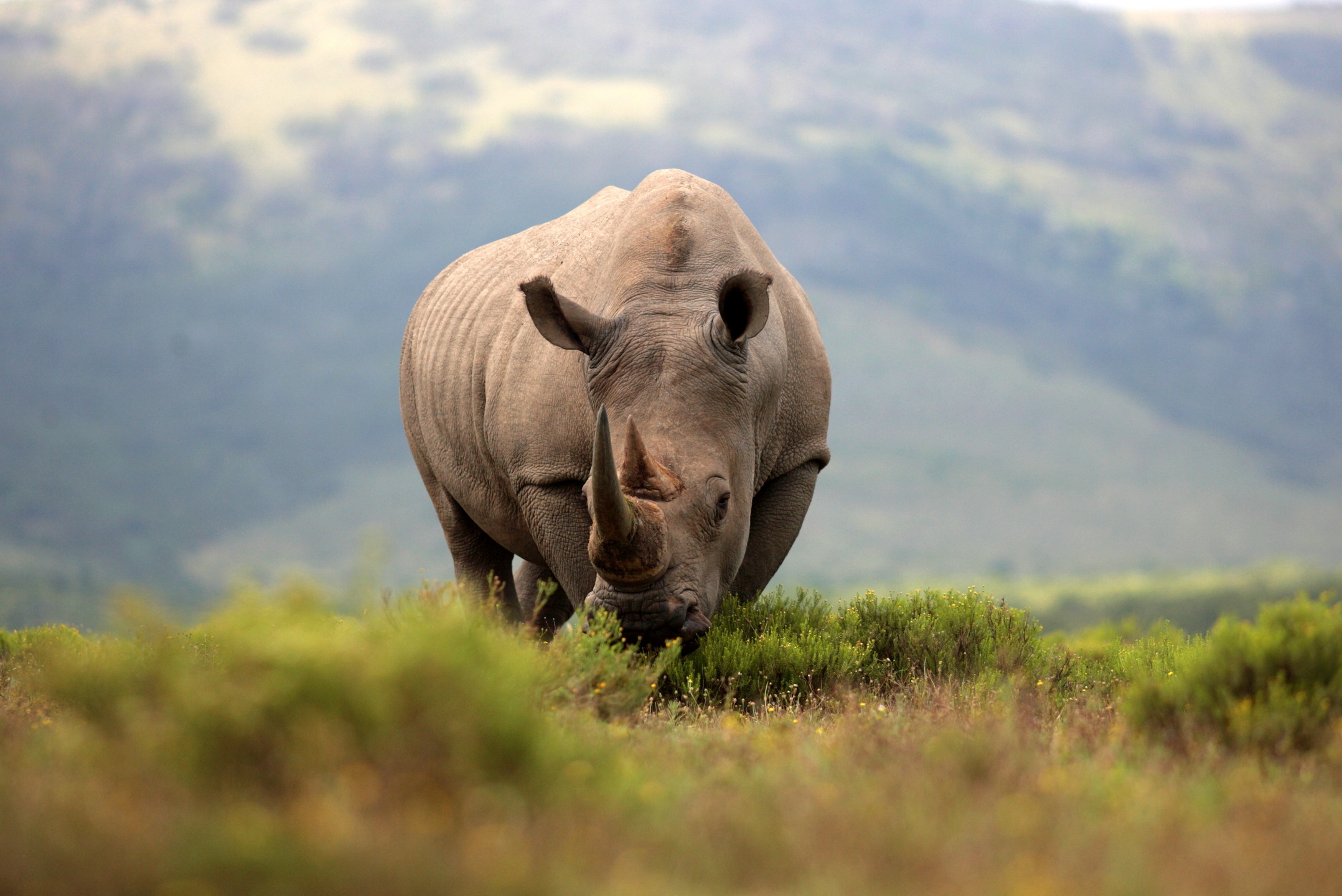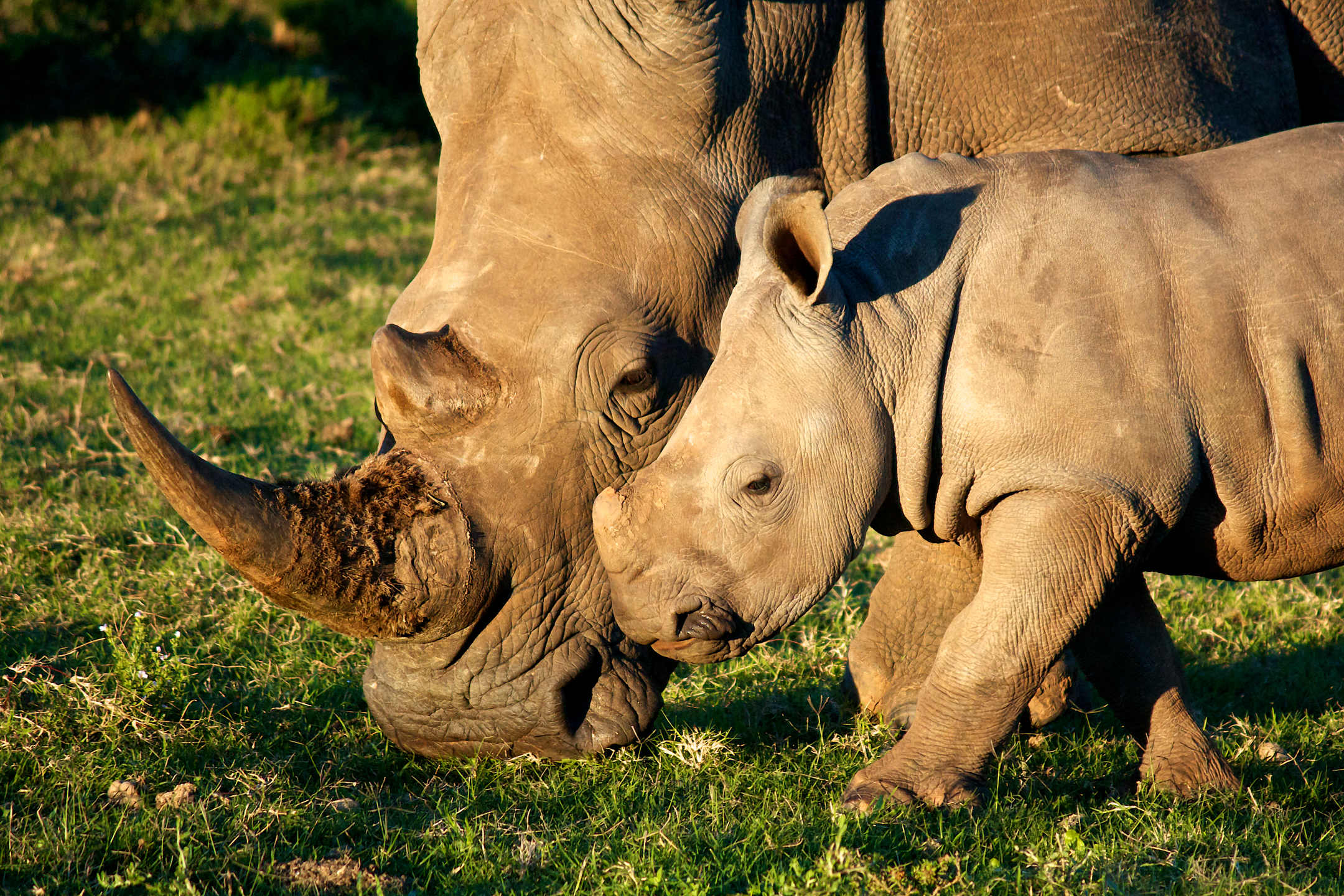Rhinoceros, commonly abbreviated as rhinos, are modern-day dinosaurs.
The much endangered wild animal has many qualities that you might not be aware of.
Install MyStart Theme for Google Chrome
Let’s take a look at our top ten interesting things about rhinos.
1. Rhino means nose in Greek.
Rhinoceros is derived from the Greek word rhinoceros, which translates to “nose horned.” We all know rhinos have a signature unicorn-like horn on the bridge of their nose. Hence, the name is befitting, given how it means nose horned. They are of the largest wild animals to roam this planet and refer to the superfamily’s extinct species: Rhinocerotoidea.

2. Rhinos say “mmwonk” when they’re happy.
One of the rarest things to be ever discovered about rhinos is making over ten distinct sounds. Yes, rhinos are known to make elaborate sounds like honks, bleats, mooing grunts, etc. Each sound differs depending on the situation. For instance, they use grunts when greeting other fellow rhinos and make a sound that comes across as “mmwonk” when they feel contentment or joy.
3. They’re long-distance sprayers.
For dominance, an Indian alpha male can spray urine at a distance of over 16ft. This act is considered a communicative gesture and is usually performed by males in the presence of breeding-age females. Other rhino species also tend to spray for various reasons. For instance, males do it to mark their territory, and female Sumatran rhinos spray urinate 12 hours before birth and even after to ward off predators from the calf.
4. They communicate through poop.
Very odd behavior for us humans but rhinos. It is a unique identifying factor for them. Turns out, rhino droppings are very exclusive to the one caught in the act. Hence, a rhino can take one whiff of the dung heap and know the animal’s age, sex, and reproductive status. This helps them greatly in making good mating choices. They have a communal dumping ground called “midden” to do the deed.

5. They’re related to zebras.
Contrary to popular belief that rhinos are closely related to hippos or maybe elephants, rhinos are related to zebras. Classified as odd-toed ungulates, the closest living relative of the rhino species is a zebra because they both walk on their toes. Even tapirs and horses are more closely inclined to rhinos because of the same classification than any similar-looking animal in the wild.
6. They have sensitive feet.
Rhinos are heavy, so when they tend to walk, they put most of their weight on their toenails, making their feet extremely sensitive and sometimes pain-ridden. So the Jumanji depiction of that one slow, heaving rhino following the wildly running herd of the jungle around isn’t completely off. It is a real-life depiction of rhinos that tend to avoid running as their toenails tend to wear down and can lead to sore and infected feet.
7. They love mud baths.
Yup, a happy rhino is a wallower and will likely spend most of their day rolling in the mud. It’s like a spa day for them because it helps them ward off pesky insects, bugs, and even sunburn. Rhinos are quite sensitive to such ailments despite their thick skin, and mud is like a best friend. It helps them cool down their body temperature as well as have a great time.

8. They risk extinction due to poaching.
Only 30,000 survive in the wild now due to high poaching. Many organizations and NGOs are working to save many endangered animals that otherwise will go extinct in a few years. As all five rhino species are endangered, saving them has become a crucial case for the balance of the natural food chain.
9. Males can be very aggressive.
While we are fighting to save these rhino species, they are busy wrestling and dying because of their injuries. Half of the males and over 30% of females die from injuries sustained while fighting, much like mortal combat of the wild rhinos. Black rhinos particularly stand out, though, for being one of the most aggressive rhino kind.

10. They have their guard: the oxpecker.
Rhinos can often be seen with oxpeckers riding their backs. They share a mutualistic relationship in which the oxpecker eats the ticks and other parasites that live on the rhino’s skin, and the rhino benefits from pest control. The rhino has excellent senses of hearing and smell, but has a compromised sense of sight. Therefore, the bird is an essential symbiont as it alerts the rhino of danger by screaming and flying away. Interestingly, a recent study observed oxypeckers picking and feeding on a rhinos’ bloody wounds.
Are you fascinated by rhinos? Get stunning images of rhinos every time you open a new tab.
Install MyStart Theme for Google Chrome










